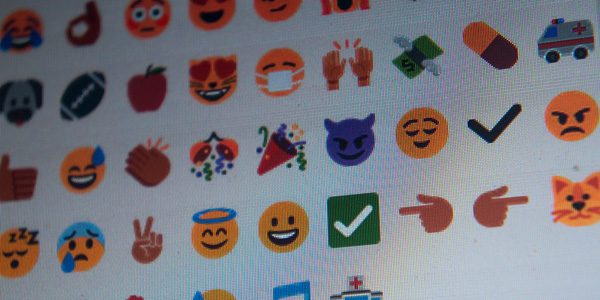 The use of technology has streamlined many tasks in our lives, and there’s no reason that it can’t do the same for magick. From using an app to identify which herbs to use in a spell, to carting around a full index of magical reference books, technology can — arguably — make us better at magick.
The use of technology has streamlined many tasks in our lives, and there’s no reason that it can’t do the same for magick. From using an app to identify which herbs to use in a spell, to carting around a full index of magical reference books, technology can — arguably — make us better at magick.
For some, the idea of mixing magick and technology can seem like mixing oil and water but in reality, technology is a great tool to help build and further your practice. People might think this way because they perceive magick as being more of a natural based energy and technology as being a distraction from the self-focus required for magical work. Although technology can be a distraction (I’m looking at you, social media) it can also be used to support your practice in a variety of ways. There are a ton of apps, websites, and devices that can help you keep your practice accessible, organized, and easily at hand in your daily life.

Kindle, e-readers, or other hand-held digital devices
This may seem so basic but honestly, this can really come in handy. The key is knowing how to make the best use of e-reader devices and apps for magical work. Many of us have a plethora of books in our libraries that are devoted to our practices, and they are also a valuable resource for people who are just starting. Using some sort of digital reader allows you to have a massive amount of knowledge at your fingertips and bonus, if you’re still secret in your practice, you can read up on your craft anywhere you want without anyone knowing what you’re up to. No sneaky book cover disguise necessary.
Kindle readers are Amazon specific but the app is free and can be used on a variety of devices — phones, tablets, desktop or laptop computers — so your library can travel with you, wherever you go. If you are using a tablet or smartphone to read, then you can also easily access PDF files with information or other book formats.
Using a combination of tools such as Foxit Reader, which allows you to create PDF files from your computer (Mac or PC) and Google PDF reader or iAnnotate gives you a wealth of options for accessing content while on the go. With a mobile app like CamScanner, you can convert photos of things into PDFs or convert text into editable text. This gives you plenty of options for building your resources in a creative way.
You can also use these resources to easily share with others, if that is your intent. Or you can use them to keep your resources close at hand. For example, if you keep a spell book, converting it to a searchable PDF file1 is fairly easy and will let you take it anywhere with just your phone. Making the PDF searchable allows you to quickly look up something within your spell book (welcome to the future, witches).
The benefits of taking the time to do something like this are many. You can also use this technology to review information that’s relevant to your practice (deities, spirits, herbs, crystals, and so on) while you are in a waiting room or on break at work. The best thing about this is that it makes practicing more accessible. People with disabilities may struggle with holding books or reading text as set, putting it in a digital format makes it lighter and it can be easily altered to the needs of the reader (text size, text to speech, et cetera).
Drawing sigils
Drawing sigils a talent in and of itself. Although the system is simple, converting your will into the final sigil form may seem a bit intimidating for some, or maybe you just don’t have the time to go through the whole process.
Websites like Sigil Scribe can help you generate a sigil on the go, and all you have to do is enter your intent. This site breaks down your request and converts it to numbers to create your sigil. This system may not work for everyone but it is by no means the only option out there.
Sigil Automoton is a paid app that uses different fonts to create the base of the sigil. It also allows you to move your letters around to create a custom outcome.
Kamea Sigils uses the kameas or magick square method of sigil creation. There is both a paid and free version of this app.
The Sigilizer is a little big different from the other options as even though it uses the same basic process to create the sigil, the end result isn’t an image, but a word that can be said aloud.
Get a tarot reading or learn how to read for yourself
There are many websites that will give you a tarot reading (with varying success). Tarot reading is ubiquitous online2 and generated spreads are not at all rare. At the push of a button (or finger swipe if mobile) you can have a tarot reading based on random numbers but the explanations aren’t always very clear. There are, however, apps that will guide you far better than a random, untested app.
Galaxy Note is a free app with some in-app purchases that was designed by people who really know and love the craft of tarot. The app has features for specific readings to help you as well as daily card pulls for you to meditate on. Also bundled in is a reference guide and encyclopedia to help you learn each card if your goal is to eventually read for yourself.
There is also Learn Tarot which is an iPhone app whose only goal is to help you learn to read tarot. This app has some spreads that you can try with your own cards. Although there are no major reading capabilities, it does have a card of the day feature.
Outside of these two apps, many decks also have dedicated apps and websites where you can have a reading done. A good trial app for tarot is the Tarot Sampler which includes cards from 10 decks with 19 spreads you can test. These are great for getting an idea of what the cards in the deck actually look like if you’re curious before buying.

Keep track of the moon
This celestial body is very important for many practitioners and although looking at the sky is a really easy way to figure out what phase the moon is in, it’s not so great for planning ahead. Websites like Moon Connection or offer plenty of free resources to help people keep track of the moon.
The phases of the moon are important for a variety of rituals, and has been used to keep time for centuries. By following its phases, you can begin to tune into the energetic shifts it provides. Although Moon Connection is not a website built for magick users, it’s a great example of how we can re-purpose things for use in our own practice. It is important to remember that even tools that don’t bear the symbols that we are used to seeing in our practices, can still be tools that are useful for us.
Use planetary hours to strengthen your magick
Planetary hours are the correspondences of the main celestial bodies to the hours of the day. They are useful for people who do spell work and time their practices around astrological happenings.
Generally, certain spells work better on certain days due to planetary rule. This system lets you take that one step further by introducing specific times during the day that the planet is ruling so that you can maximize the strength of your work. If you were to try and figure out the hours yourself, it would take charts, study, and more work than any spell you had planned. Thankfully, there’s technology for that.
Lunarium provides an app for both Android and iPhone that can be used to keep track of the hours. This is a great reference not only for planning, but to use on the fly. For example, you don’t want to cast to cast a spell for peace and relaxation during an hour ruled by Mars, the king of excitement, passion, and all things fire. You can get more complex in your astrological evaluations than this, but being able to quickly glance at the planetary hours can give you some assurance that it’s the right time for a working.

Use emojis responsibly
Emojis have become a huge part of popular culture; we’re even at the point where our phones are making suggestions for replacing our words with these cutesy, web-based symbols. While people may be using them to more accurately communicate with one another, in her article “How to Cast Spells Using Emoji,” Tarin Towers breaks down how we can use them for spell work, and it’s pretty much brilliant.3
The steps are incredibly easy to follow and most people do have a smartphone that comes with the full emoji set of icons. This pictorial language leaves a ton of room for creativity in building your own spell but the article does provide some suggestions to get you started.
Towers uses the crystal ball symbol or the circle in order to create a representation of a magical circle and frame the spell. Then she chooses symbols that match her intent for what she hopes to happen or what she is looking for. So if you are hoping to find more business opportunities in the future, you may select the businessman, money, and maybe a symbol to stand for the work you do and place them between the two crystal balls.
This may sound silly at first but using emojis this way is a great idea for working magick into your everyday – you can easily workup a spell while you procrastinate on your phone. It will also help you learn to be mindful of your intent and wording as each spell you cast needs to be specific with this wide range yet still limited set of icons.
Emojis aren’t the only way to cast spells over the web. The post “Charging a Sigil with iPhone Apps” from the Chaos Witch outlines how to create a sigil, charge it and post it online to activate using a wide variety of iPhone apps.4 The steps outlined in this post are specific to this person’s practice but you can see how easily you can adapt the basic ideas of these digital methods for your own needs. You can post your sigils on Facebook to ward off cyber-bullying or drop an emoji spell to a friend to help them out. The possibilities are limitless.
Even more uses
Although we’ve listed many very specific apps, websites, and devices for use, there are a thousand miscellaneous ways to use technology in support with your magick.
- You can use Skype to meet with people in order to perform group spells or provide service for clients.
- A spreadsheet can be easily updated with your magical supplies, decks, crystals, etc.
- A digital calendar can be used to keep track of spell work or make note of signs and symbols you’ve seen in your ever day to day life. For example, when an owl landed on your window sill or you heard three bells, etc.
- Keep your dream journal on your phone using a built in note taking app.
- Use camera phones to capture the set up of an alter before moving or recreating in another space.
These are all very simple things that can be done. Using technology, even if it’s just for something as simple as record keeping, helps incorporate your practice into your daily life. Even if none of the tools we’ve recommended here work for you, look around for alternatives. If you have something in your practice that you’re struggling with, technology may provide a solution even if it’s not as direct as drawing a sigil or laying out cards for a reading.
Note: We know that all good technologies all live and die — if you have recommendations for other apps or info about replacements for the above suggested tools as they become obsolete… please leave them in the comments!
Image credits: Creativity103, Esther Vargas, ry Ross, and Theus Falcão
- Techwalla, “How to make a searchable PDF.” [↩]
- You might also be interested in “Tarot reading online: Making a digital connection,” which gives many great tips for doing divination over the web. [↩]
- Tarin Towers, “How to Cast Spells Using Emoji,” Vice. [↩]
- Lee, “Charging a Sigil with iPhone Apps,” The Chaos Witch. [↩]







